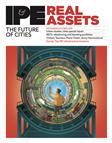Current regulations and a keen local property ownership culture are holding back Spanish institutional investment in real estate, as Adrienne Margolis reports
Unlike their counterparts in such countries as the UK or the Netherlands, Spanish pension funds do not traditionally invest in real estate. One reason has been tight domestic regulation, which has limited their participation.
"Currently, real estate is below 1% of pension funds' portfolios, but that is only changing slowly," Alberto Lopez, research analyst at Axa Real Estate Investment Managers, says. "But they do not seem about to increase their exposure to real estate - no one wants to be the first," he adds.
Lopez believes that exposure is also low because it is a very different financial instrument. "It is the fear of the unknown," he suggests.
Property developers are the biggest domestic investors in Spanish real estate, and financial institutions come next. The banks account for investment of around €8.5bn, but this is held by a total of only seven funds. The biggest amount is invested by Santander (formerly Banif), which has a €4bn portfolio. BBVA is the second biggest investor in real estate, with a portfolio of around €2bn.
The remaining institutions all invest less than €1bn each.
Another reason for the small quoted property market is a law introduced in the mid 1990s requiring 50% of a portfolio to be invested in residential property. "The requirement to invest 50% of the funds in residential housing is a restriction," Angel Martinez Aldama, director general of Inverco, the Spanish Pension Fund Association, says. "We would like it to disappear."
Aldama believes that it is a distortion for domestic real estate funds, which makes it more difficult for them to compete in Europe. "Even so, the returns have been very good over the last 10-15 years. The annual rate of return has been around 6%," he points out.
Tim Nalder, general manager of Invesco in Madrid, reckons that the requirement to invest 50% of real estate funds in residential property is "a political hot potato.
"The government has wanted to increase the supply of rented accommodation. So in the mid 1990s it created a fiscal break on capital gains if 50% of a portfolio was invested in residential property," he recalls.
Banif was one of the market leaders. It was the first to get involved, but it had to buy a huge residential portfolio to get the tax break.
The problem is that the requirement has not helped to create a significant extra amount of rented residential property, because the Spanish have a huge appetite for property ownership. "Property ownership is 85-90%. Even though the government wants to create a more fluid market with more rented accommodation it is not easy to do," Nalder believes.
The Spanish are very similar to the Irish and British in their investment mentality, Nalder says. "They are fervent property owners. The amount invested has tripled in the last 10 years. Everyone sees themselves as a property expert - more in residential than commercial."
The public's appetite for real estate has left less available for investors to help them meet the 50% quota. Property developers have preferred to sell directly to the public, rather than sell complete residential schemes to real estate funds.
Edward Farrelly of property advisers Richard Ellis in Madrid agrees. "In recent years the law demanding 50% residential investment has been a bar, particularly when residential investment has been hard to get hold of."
But the housing market is cooling, and this may mean more property becomes available for institutional investors. "House prices were rising at 7.2% in the first quarter of 2007, against 18% last year," Farrelly says, "so developers are more open to approaches from funds. But because the letting market is only around 10% of the entire housing market, it is hard to make money out of the sector."
Good returns on real estate may become even harder to achieve. "The Spanish market has been one of the best performers over the last five or six years, but investors and developers have had enough," Lopez believes. "It is changing slowly - the fact that the residential market is overheated is encouraging diversification."
Opinions are divided about whether there will be a soft landing or a crash in the residential market. But despite high levels of home ownership, mortgage rates are relatively low, Lopez points out. "At Axa we reckon there will be a soft landing. The economy as a whole is likely to slow down rather than go into recession," he says.
Spanish real estate funds are diversified, investing in office, retail, a limited amount of logistics and residential. Santander has acquired several shopping centres, and last year paid €270m for a shopping complex in Madrid.
Spanish developers who have made a lot of money from the residential boom over the past decade are increasingly nervous that it cannot be sustained, so they are moving into France and eastern Europe. Aldama says institutional investors would also like to diversify abroad, but until recently they faced legal hurdles. Changes in the law two years ago made it easier for Spanish institutions to invest in real estate outside Spain.
One possibility for diversification in the longer term may be for institutions to invest in real estate investment trusts (REITs). "The Spanish investment market is becoming more sophisticated because of the need to diversify. But there is no sign of REITs being introduced," Lopez reckons. "There has been a huge appetite to invest in real estate aboard in the last two to three years, but there is not enough knowledge in the market to introduce REITs," he adds. "The government is working on new legislation but it is going to take time. We view it as something for the mid term."
According to Aldama, there is no new legislation affecting the institutional investment sector on the horizon, because there will be a general election next March. "Politicians are focused on that at the moment," he says.












